In light of the recent massacre by a violent misogynist in Santa Barbara, I find myself full of rage.
I have every right to be angry. I should not have to live in a world in which 1 out of 6 women has been the victim of sexual assault, a world in which 1 out of 4 women will experience domestic violence. I will not stop being angry until this reality is acknowledged by all people. I will not stop being angry until women are no longer the targets of male violence.
In the face of a society that seeks to ignore, dismiss, and minimize my anger, I need spaces where it’s safe to express my rage.
Fiction provides just this sort of space. And in fiction, our anger about the epidemic of male violence against women can be expressed in ways that, in real life, are problematic.
I believe that we should seek nonviolent solutions to social problems. But I also believe that members of oppressed groups sometimes need the catharsis of fictional revenge narratives to sustain their strength.
The truth of the matter is that in the real world justice comes slowly, if it ever comes at all. So sometimes we need stories in which justice comes swiftly and unrelentingly. And when it comes to swift, unrelenting justice, there’s no one better than Quentin Tarantino.
Tarantino’s last two films, Django Unchained and Inglourious Basterds, are violent fantasies that imagine historical evildoers – slaveowners and Nazis – getting what they deserve. They don’t reflect reality or morality and they aren’t meant to; these are highly emotional stories that offer viewers the satisfaction that we are denied by the complexities of real life. Tarantino’s first venture into this kind of story was in the 2007 movie Death Proof. In Death Proof, the archetypal villain who gets his comeuppance is a misogynistic murderer who preys on women.
(Warning: Spoilers to follow.)
Death Proof is a story in two acts, depicting the fates of two groups of women who are hunted down by the villain “Stuntman Mike.” Mike kills the first group of women, but the second group of women take him by surprise by fighting back.
The movie dramatically realizes a fear that all women face: at any given moment in our daily lives, we may be the target of violence. In Death Proof,this haunting fear is symbolized through Stuntman Mike’s titular “death proof” car, which he uses as a weapon to kill the women he targets.
Throughout the movie the car elicits an eerie sense of fear in the women who see it. Like the real-life threat of violence against women, it is always on the periphery, always in pursuit of women who are just going about their ordinary lives.
Stuntman Mike’s car functions as a perfect symbol for male violence against women. It’s a stunt car built to protect the driver from dying in a crash, allowing Mike to survive a head-on collision that kills the women he targets. Similarly, the culture of violence against women is harmful to men, but is only fatal to women. The “driver” is cushioned by the benefits of male privilege. As Stuntman Mike tells a woman sitting in his passenger seat:
Hey, Pam, remember when I said this car was death proof? Well, that wasn’t a lie. This car is 100% death proof. Only to get the benefit of it, honey, you REALLY need to be sitting in my seat.
While the violent male is “death proof,” even the strongest women find themselves vulnerable to male violence. The group of women in the second act articulate the reality of the ever-present threat of violence in this true-to-life scene:
Kim: Look, I don’t know what futuristic utopia you live in, but the world I live in, a bitch need a gun.
Abernathy: You can’t get around the fact that people who carry guns, tend to get shot more than people who don’t.
Kim: And you can’t get around the fact that if I go down to the laundry room in my building at midnight enough times, I might get my a** raped.
Lee: Don’t do your laundry at midnight.
Kim: F*** that! I wanna do my laundry whenever the f*** I wanna do my laundry.
Kim’s rejection of patriarchal norms prepares us for the turn in the plot to come. When Stuntman Mike attempts to drive Kim, Abernathy, and Zoe off the road, we anticipate another grisly death scene. But instead, the girls make a narrow escape. And rather than running away, they turn the tables on the predatory misogynist.
In the amazing car chase that ensues, we get to see three women in a position that they rarely play in action/horror films: as hunters rather than hunted, as empowered actors rather than passive objects to be acted-upon. In a thrilling, unexpected reversal, the male predator becomes the objectified prey.
The final scene of absurd and joyous violence shows the women beating up Stuntman Mike as he cries and begs for mercy. As he falls to the ground, the women cheer and the scene ends with a victorious fanfare. It is violent, over-the-top, and oh-so-satisfying.
More violence is clearly not the answer to the real-world problem of male violence against women. What we need is a societal shift away from patriarchy and sexism. This will be a complex and multi-faceted process, but part of the process is showing violence against women for what it is: a reprehensible crime. It will also involve reframing the way that we see women — not as passive targets, but as active agents. So while Death Proof does not provide a blueprint for social change, it does contribute to a positive cultural shift. Images of women standing up and fighting back help real women to harness their own anger and use it in constructive ways, to fight back against patriarchy and sexism with nonviolent resistance.
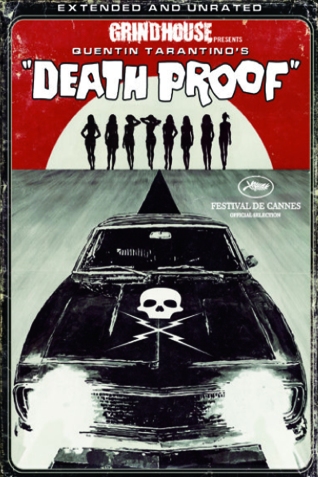
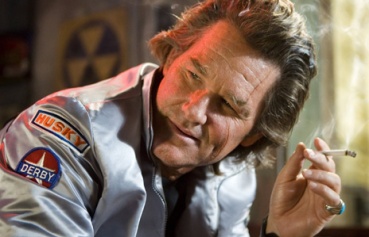
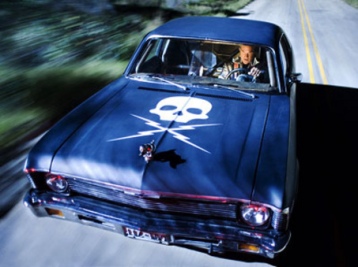
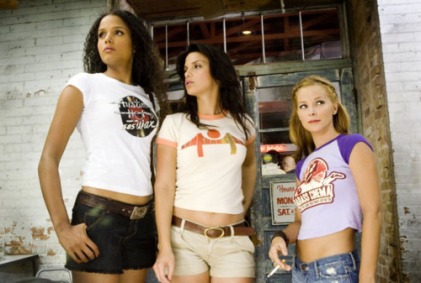
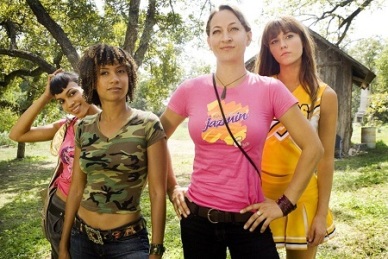
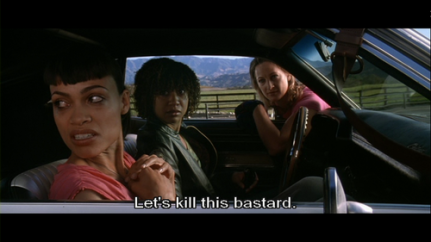
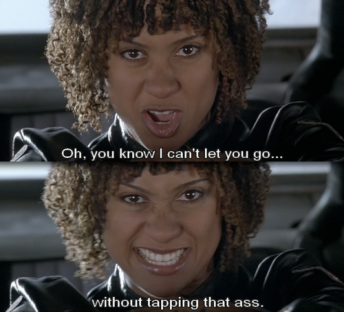
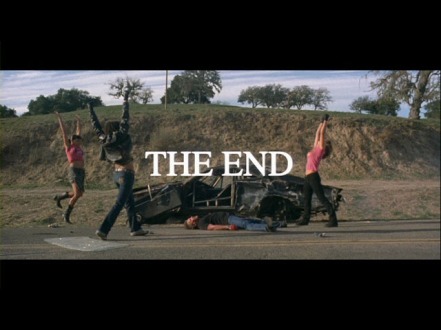
Yes to all of this beautiful anger. Thank you for these words.